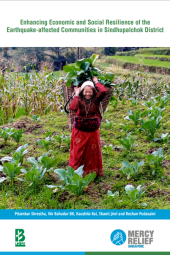Enhancing Economic and Social Resilience of the Earthquake-affected Communities in Sindhupalchok District
Summary
Following the devastating Nepal earthquake in April 2015, which severely impacted 14 districts, including Sindhupalchok, and caused significant loss of lives, homes, and livelihoods, various governmental, non-governmental, and international entities initiated relief and rehabilitation efforts. LI-BIRD actively participated in these endeavors, collaborating with organizations and donor agencies to provide essential support to 15,465 families across 12 affected districts, including 1,753 families in Sindhupalchok. The earthquake had particularly destroyed vital agricultural assets such as seeds, storage structures, houses, and tools, severely affecting the livelihoods of the affected families. LI-BIRD's assistance extended beyond immediate relief, focusing on sustainable livelihoods. In partnership with donor agencies, the 'Enhancing Economic and Social Resilience of Earthquake-affected Community in Sindhupalchok (ESRS)' project, funded by Singapore's 'Mercy Relief', played a crucial role in this ongoing support. This publication highlights the project's concepts, approaches, activities, achievements, and lessons learned in enhancing the economic and social resilience of earthquake-affected families in Sindhupalchok.
Categories:
Report
Publisher:
LI-BIRD
Published Year:
2020
